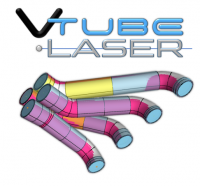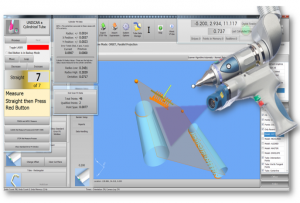Difference between revisions of "Which are Better for Tube Measurement - LASER Scanners to Ball Probes?"
(Created page with "<table> <tr cellpadding=10> <td width=225> 200px * Back to VTube-STEP * Back to VTube-LASER </td> <td width=300> image:vtl_screen...") |
(→Which One is Best In Real-World Applications?) |
||
| (7 intermediate revisions by one user not shown) | |||
| Line 11: | Line 11: | ||
</tr> | </tr> | ||
</table> | </table> | ||
| + | |||
| + | <br><br> | ||
| + | |||
| + | ==Which Is More Accurate - LASER or Ball Probe?== | ||
| + | |||
| + | Technically, ball probes are more accurate than laser scanners because laser scanners depend on the calibration of the ball probes. However, the actual difference in accuracy is very small (about 0.001" or 25 microns). So, when it comes to measuring real-world tube shapes, ball probes and lasers both return similar accuracies.<br><br> | ||
| + | |||
| + | What creates the bulk of the deviation are outside factors – like deformation in cylinders and measuring technique.<br><br> | ||
| + | |||
| + | A much smaller number of points are probed with measuring a tube straight with ball probe. A very large number of points are recorded when using a scanner. The more deformation exists in a tube shape, the more the two methods differ will find differing centerlines.<br><br> | ||
| + | |||
| + | If you were to measure a ground rod with the ball and the laser, then it should make little difference in the centerline position. Both will be very accurate and repeatable. | ||
| + | |||
| + | <br><br> | ||
| + | |||
| + | ==Which One is Best In Real-World Applications?== | ||
| + | |||
| + | There are cases where either types of measurement make little difference. However, the LASER scanner can often find a more true centerline because it uses many more surface points to find the centerline than does the ball probe. | ||
| + | |||
| + | <br><br> | ||
| + | |||
| + | ==Other Pages== | ||
| + | * See [[VTube-LASER]] | ||
Latest revision as of 22:34, 24 May 2017
|
Which Is More Accurate - LASER or Ball Probe?
Technically, ball probes are more accurate than laser scanners because laser scanners depend on the calibration of the ball probes. However, the actual difference in accuracy is very small (about 0.001" or 25 microns). So, when it comes to measuring real-world tube shapes, ball probes and lasers both return similar accuracies.
What creates the bulk of the deviation are outside factors – like deformation in cylinders and measuring technique.
A much smaller number of points are probed with measuring a tube straight with ball probe. A very large number of points are recorded when using a scanner. The more deformation exists in a tube shape, the more the two methods differ will find differing centerlines.
If you were to measure a ground rod with the ball and the laser, then it should make little difference in the centerline position. Both will be very accurate and repeatable.
Which One is Best In Real-World Applications?
There are cases where either types of measurement make little difference. However, the LASER scanner can often find a more true centerline because it uses many more surface points to find the centerline than does the ball probe.
Other Pages
- See VTube-LASER

